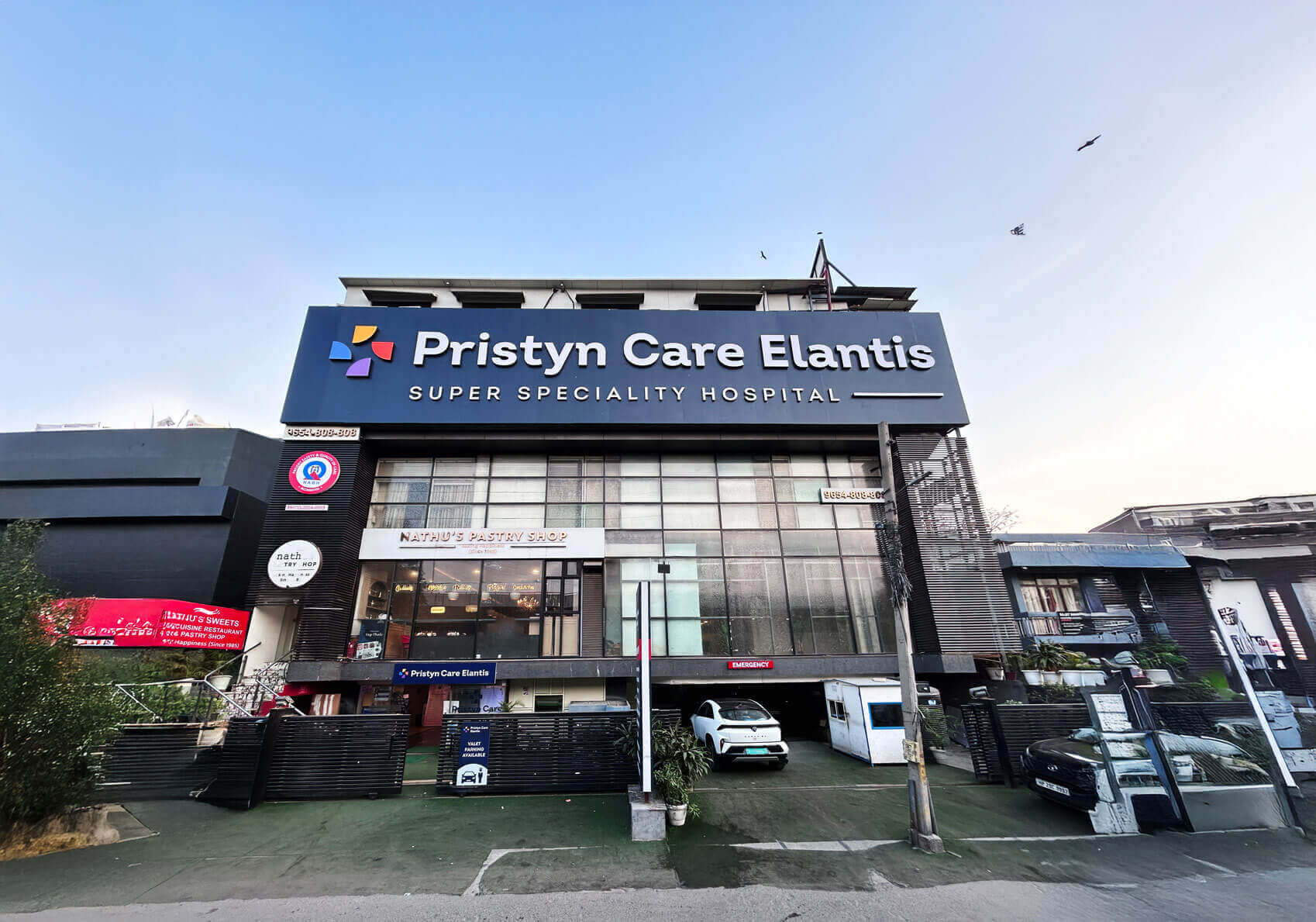
Delhi
USFDA Approved Procedures
Minimally invasive. Minimal pain*.
Insurance Paperwork Support
1 Day Procedure


Thin Flap Lasik Laser Surgery Options
Explore advanced LASIK treatments at Pristyn Care in Delhi , where the use of modern technology and expert care promise better vision outcomes and quicker recovery times.
Contoura Vision is a quality LASIK procedure that enhances your vision by correcting even the tiniest imperfections on the cornea. This procedure uses topography-guided mapping to create a highly personalised treatment plan for each patient. Patients can choose between blade and bladeless techniques based on suitability.
The bladeless method uses a femtosecond laser for flap creation, making it a fully laser-guided procedure. The blade method, using a microkeratome, also delivers effective results. Contoura Vision reduces glare, halos, and night vision issues, providing sharper vision and improved clarity.
Customised LASIK takes precision to the next level by customising the surgery to your specific eye characteristics. Using wavefront technology, this method measures how light travels through your eye, creating a detailed map that guides the laser correction process. It’s particularly beneficial for those with higher-order aberrations—complex vision errors that traditional LASIK might not fully address.
Patients often report clearer and more precise vision post-surgery, with reduced risks of night-time glare or halos. This approach guarantees you get the most accurate correction possible, making it a favoured choice for many seeking an advanced LASIK treatment.
Standard LASIK is a well-established and effective method for correcting common vision problems like nearsightedness, farsightedness, and astigmatism. In this procedure, a thin flap is created on the cornea using either a microkeratome blade or a laser. The underlying corneal tissue is then reshaped with an excimer laser to correct vision.
Traditional LASIK is widely appreciated for its quick recovery time and proven results over decades of use. It offers a reliable solution for those looking to reduce their dependence on glasses or contact lenses.


 NABH
NABH
Pristyn Care Elantis is dedicated to revolutionising surgical care. We combine the latest medical technology with highly skilled professionals and a patient-centric approach to transform the healthcare experience. Our team of doctors at Pristyn Care Elantis, strives to simplify the entire patient journey, ensuring a seamless process from diagnosis through recovery.
We offer specialised treatments across a wide range of medical fields, including proctology, laparoscopic surgery, ENT (ear, nose, and throat), vascular, gynaecology, urology, aesthetics, orthopaedics, ophthalmology, and weight loss solutions.
The Suites & Rooms at Pristyn Care Elantis are designed with your comfort in mind, offering a welcoming ambiance and top-notch amenities to make your stay as pleasant as possible.
Our highly skilled medical team, supported by advanced infrastructure, makes us a trusted choice for comprehensive healthcare solutions.
...Read More
Delivering Seamless Surgical Experience in India
Your safety is taken care of by thermal screening, social distancing, sanitized clinics and hospital rooms, sterilized surgical equipment and mandatory PPE kits during surgery.
A dedicated Care Coordinator assists you throughout the surgery journey from insurance paperwork, to free commute from home to hospital & back and admission-discharge process at the hospital.
Our surgeons spend a lot of time with you to diagnose your condition. You are assisted in all pre-surgery medical diagnostics. We offer advanced laser and laparoscopic surgical treatment. Our procedures are USFDA approved.
We offer free follow-up consultations and instructions including dietary tips as well as exercises to every patient to ensure they have a smooth recovery to their daily routines.
Surgeons create flaps as thin as 90 to 100 microns using precise laser technology. Thinner flaps preserve more corneal tissue, making the procedure safer for patients with thinner corneas and improving overall vision outcomes effectively.
Most patients recover within a week. Vision improves within 24 hours, but full healing takes months. Following post-surgery care instructions is crucial for smooth recovery and to prevent complications after the thin flap LASIK procedure.
Yes, it is safe when performed by an experienced surgeon. Modern laser technology reduces risks, and most patients achieve clear vision. A detailed eye examination determines if you are a good candidate for the surgery.
No, the flap is not visible. It blends naturally with the cornea and heals over time. Patients neither see nor feel it after recovery, allowing for a smooth and hassle-free vision correction experience.
The flap bonds securely but remains slightly weaker than the natural cornea. It does not cause issues in daily life. Avoiding direct eye trauma ensures long-term stability and prevents rare complications from occurring unexpectedly.
Patients must be at least 18 years old. No strict upper limit exists, but eye health should be stable. Older patients should discuss potential vision changes with a doctor before considering this vision correction option.
Minor side effects include dry eyes, glare, or halos. Serious complications are rare when performed by skilled surgeons. The advanced LASIK treatment uses modern laser technology to ensure minimal risks and excellent vision correction outcomes.
People with thin corneas, severe dry eyes, unstable vision, or eye diseases are not suitable. Pregnant or breastfeeding women should wait before surgery. A thorough eye exam helps determine eligibility and ensures patient safety before treatment.
Avoid rubbing your eyes, swimming, dusty areas, and intense workouts for weeks. Wear protective sunglasses and use prescribed eye drops. Following these precautions guarantees smooth healing and reduces risks after this specialised laser vision correction.
The Thin Flap LASIK procedure is an advanced vision correction technique that uses a thinner corneal flap for better safety and faster healing. Surgeons use different methods based on the patient’s eye condition and prescription needs.
This is a topography-guided LASIK procedure that maps corneal irregularities for personalised treatment. It improves visual clarity and reduces glare, halos, and night vision issues.
Steps:
This method uses wavefront-guided technology to correct unique corneal imperfections and enhance vision quality beyond standard LASIK.
Steps:
This conventional procedure effectively treats nearsightedness, farsightedness, and astigmatism.
Steps:
Thin Flap LASIK is a safe and effective vision correction procedure. However, not everyone qualifies for the surgery. A detailed eye checkup determines if you meet the requirements.
A qualified surgeon will assess your eyes before recommending SBK LASIK surgery. If you meet the criteria, you can enjoy clearer vision without glasses or contact lenses. Always consult an experienced eye specialist for a proper evaluation.
Preparing for Thin Flap LASIK involves a few important steps so that everything goes smoothly:
After undergoing Thin Flap LASIK, it’s essential to follow some guidelines for a smooth recovery: